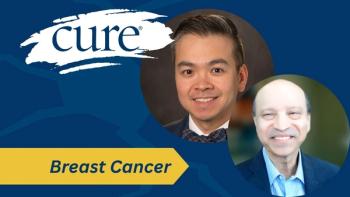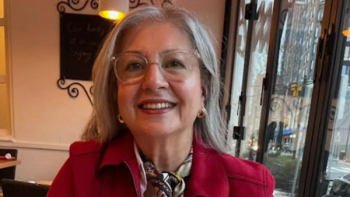
Mutations and Targeted Therapy in Lung Cancer
Transcript:Mark A. Socinski, MD: It is essential that, at the time of initial diagnosis, adequate molecular testing is done to particularly find what we refer to as “drivers” of the cancer. A good way to think about this is like a light switch. When these mutations occur, or translocations occur (and these are DNA alterations), it really is like turning on the light switch. It is the growth stimulus to the cancer. It’s turning the light on and allowing the light to shine. The analogy would be, “Your cancer is growing.”
We know that there are a number of drivers that are either mutations, or translocations, or amplifications, and that when you target them with specific targeted therapies, the data we have to date has been that this is a much more effective approach than using standard chemotherapy that we might have used 5, 10 years ago. So we’ve become smarter at directing the appropriate targeted treatment for the alteration that you may have. Now, not all DNA alterations are necessarily drivers. There’s another term we use called “bystander mutations,” where these mutations are there but they’re really not the light switch that’s driving the cancer. So we note them. They may not have therapeutic implication or prognostic implication, but they’re just detected because, again, in the process of interrogating the DNA, you may find a lot of things that don’t necessarily affect the treatment.
Edward S. Kim, MD: As we get into this era of precision medicine, everyone is talking about, “Well, gosh, I want specific targeted therapy,” or directed therapy, or even personalized therapy is what it’s called—there’s a lot of different terms around it. The concept of it is that rather than just giving a single therapy to anyone who walks through the door that has a diagnosis of nonsquamous non—small-cell lung cancer, we need to look, individually, at each one of those tumors. The example I give is that if you had 4 people with blonde hair walk in to the clinic, that doesn’t mean they’re all related. They can be very different, genetically, even though they all have blonde hair.
So looking inside the genes to figure out if those 4 people with blonde hair are related is the same thing we do with cancers. We need to get a piece of tissue from that tumor that’s inside of you and test it to see if it has a different genetic makeup than other lung tumors from other people. And each tumor is going to have different genetic makeups. When we find a genetic marker from our testing that coincides with a therapy that we have to treat it with, that helps direct our therapy. So that is the art of personalizing care—finding something that’s unique inside that tumor and finding the appropriate therapy that matches to it. And we know that when we do this, there will be better outcomes.
Transcript Edited for Clarity




